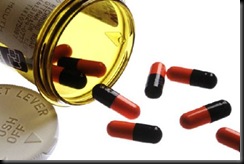Minocycline reduces death in JE-infected mice and could do the same in humans, say researchers.If Indian scientists can transfer their laboratory success to human trials, a common acne-treating antibiotic could well turn out to be a life saver for patients of Japanese encephalitis (JE), commonly known as brain fever.
Researchers at the National Brain Research Centre (NBRC) in Manesar, Haryana, have shown that the common antibiotic minocycline reduces death in JE-infected mice and believe it could do the same in humans.
“Even if we replicate a fraction of the success in animals reported by NBRC team, we can save several lives and prevent many others from being maimed every year,” says N.C. Borah, managing director of the Guwahati Neurological Research Centre (GNRC).
He plans to undertake clinical trials in May at GNRC and two other hospitals in Guwahati and Dibrugarh as each of these centres receive 300-400 seriously ill JE patients every season that typically begins with the monsoon.
A viral disease that causes inflammation of the brain, JE kills about one-third of its patients and half the remaining end up with serious disabilities including cognitive and behavioural impairment. The infection is endemic in India, where 135 districts in 15 states routinely report cases, according to the Union ministry of health and family welfare.
“No effective treatment exists today, what we have is only supportive,” says Anirban Basu, the lead researcher from NBRC, who thinks clinical success could lead to immediate therapy, as minocycline is an inexpensive and freely available drug currently used for treating bacterial infections of the skin, teeth and urinary tract.
Basu’s early work showed that minocycline not only reduced the inflammation in the brain, but also stemmed loss of healthy neuronal cells and decreased the viral load (a measure of the severity of a viral infection). However, questions like how effective the drug will be, if there’s a time lag between the infection and the treatment, or whether it will reduce the disabilities in survivors can be answered only after the human trials, says Basu.
Scientists believe it’s a fairly safe bet, as it’s the efficacy rather than the safety that needs to be ascertained, because the drug is already in use. “It’s a straightforward case, but we are hitting a stone wall,” says NBRC director Vijayalakshmi Ravindranath, since there’s no government agency to do translational research or even coordinate it. Translational research helps convert laboratory findings into therapeutics—or from bench to bedside. “In the absence of intellectual property, there’s no money to be made here or else we could have gone to a commercial agency for trials.”
The cost of the trial is not a trivial issue either. But the department of biotechnology, of which NBRC is an autonomous institute, has promised to extend support. Trials in children are difficult and expensive, as each centre needs to have sufficient number of ventilators, which can cost up to Rs 20,000 per day for every child. “I am pushing it; we hope to get started by this season,” says Ravindranath. NBRC has identified a contract research organization and is chalking out the trial design, things which research institutions in the country typically don’t do.
Borah thinks the sample of 250 patients can be recruited in just one season in the north-east, which has the highest incidence of JE. “We will run the study for four weeks and it can be completed by November,” he adds.
The successful and timely completion of this trial is important for more than one reason. Minocycline has shown promising results in other neurogenerative disorders including Alzheimer’s and Parkinson’s disease and multiple sclerosis, a nervous system disorder. Moreover, its success in JE could be an encouragement for further initiatives in “repurposing” of existing or discarded drugs. “This is a good strategy for developing countries,” says Basu.
Source:TOI


No comments:
Post a Comment